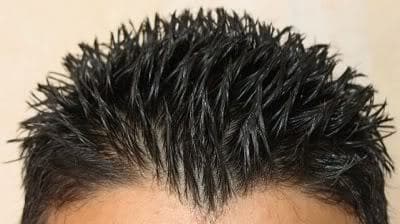- Kartaltepe Mahallesi İncirli Caddesi Limon Çiçeği Sokak No: 1 34145 Bakırköy İstanbul
- +90 541 548 52 47

Is Dermaroller Useful For Hair Growth? How is it applied?
27/09/2022
Can Male Pattern Hair Loss Be Prevented?
27/09/2022
It may not be easy for you to realize at the first stage whether your hair loss is a problem that progresses towards severe hair loss. Loss of dead hair is a natural and normal process for the telogen phase, which is the resting phase of the hair growth cycle. However, the shedding that occurs in the anagen phase, which covers the development and growth period of the hair, indicates that the hair health is in danger and that it should be intervened at this stage. If you want to know when to take hair loss seriously, you need to have an idea about the hair life cycle. However, those who do not want to deal with hair anatomy and growth stages can follow some signs and listen to the tips that we will share in the rest of the article in order to detect the hair loss problem at an early stage.
What Does Your Hair Look Like When Wet?
In the telogen phase, the dead hair starts to fall out by separating from the hair follicle under the scalp. This is considered a natural part of the growth cycle. No matter what reason the hair starts to fall out, they warn us beforehand with changes in its structure and appearance. Hair strands that have lost their vitality, have a dull appearance and have thinned are among the leading symptoms. Since there is no noticeable volume loss, we cannot notice that shedding has started. The best way to understand this is to examine how the hair looks when wet after washing.
Wet hair reveals a clear picture of what the hair loss problem is like. This is because when the hair is wet, the hair strands clump together and become heavy. The increase in hair volume with wetness gives an idea of how far the problem has gone.
What Causes Hair Thinning?
The thinning of the hair strands is related to the inability of the hair follicle to be fed adequately and correctly. There are many factors that cause the hair follicles to not be fed properly. When the hair follicle is deprived of the quality foods it needs due to vitamin deficiencies, unbalanced diet, sleep disorders, and stress, the hair begins to thin. Hair thinning is an important sign of shedding. What causes hair loss is the hormone DHT, which determines male sex characteristics. DHT causes the hair follicles to shrink by binding to the androgen receptors of sensitive hair follicles. This leads to thinning of the hair.
Is It Possible to Treat Thinning Hair Naturally?
We can answer this question both yes and no. Although it may seem like a paradox, there are cases where natural methods or measures that can be taken individually work, and there are cases where they are insufficient. We cannot deny the genetic inheritance factor in hair thinning caused by shedding. In addition, we cannot fix hormone imbalances without medical help. Therefore, the causes should be identified first and treated if possible.
Well, what are the natural methods that we can apply in terms of both supporting the treatment process and protecting hair health?
1- Apply a Nutrition Program Suitable for Hair Health
With some foods that you will add to your diet, you can provide the vitamin and mineral support your hair needs for growth. For healthy hair, your vitamin stores should be full of A, E, C, B12, biotin and folic acid. Getting help from foods that can be beneficial for hair can be a good start to solve the problems of shedding caused by thinning hair.
2- Consider Micro Needling Treatment Option
Micro needling treatment, which accelerates blood flow in the scalp and renews cells, is performed by applying small needles to the skin surface. Since it is a painless and side-effect-free option, it is one of the most preferred hair augmentation methods, but of course under the management of a doctor.
3- Massage the Scalp Regularly
The purpose here is to accelerate blood circulation. In order for the hair follicles to breathe and be nourished, regular blood flow must be ensured. All it takes is 10 minutes of your time a day. The massage, which you will apply by circling your scalp with your fingertips, will not only relieve tension in your scalp, but also contribute to the proper nutrition of your hair follicles by accelerating blood circulation.




